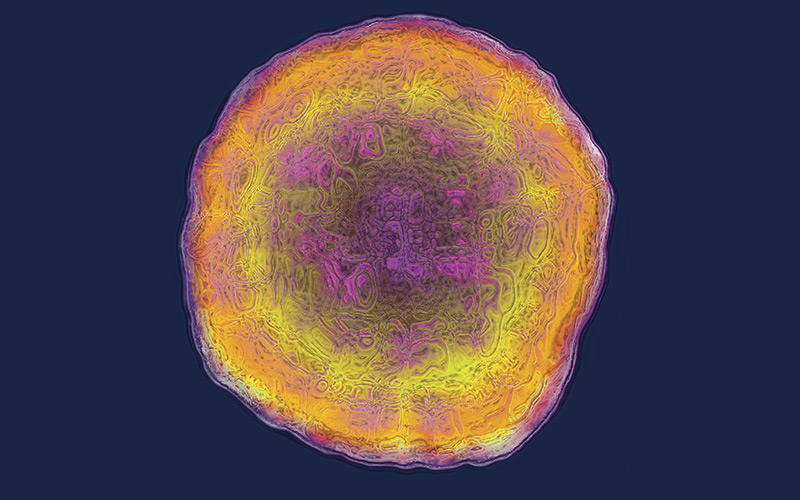Issue 3 of our journal is now completed. By the time you read this, the hard copy i may already have landed on your doormats, and those of you who have been to the website will already have accessed and read some of the papers. Editor Andrew Blann outlines the content in the latest issue.

Yakoob J et al. Association of Helicobacter pylori and protozoal parasites in patients with chronic diarrhoea. Br J Biomed Sci 2018 75; (3) 105-109.
Although H pylori is a common topic of practice in the UK, intestinal parasites are rare. Yakoob et al refresh our knowledge of the latter in patients with diarrhoea who unsurprisingly were more likely to carry parasites such as Blastocystis and Entamoeba species. Notably, certain parasitic infections were linked to infection with H pylori.
Zhong Q et al. Rapid detection and subtyping of human papillomavirus in condyloma acuminatum using loop-mediated isothermal amplification with hydroxynaphthol blue dye. Br J Biomed Sci 2018 75; (3) 110-115.
As human papilloma virus (HPV) is a leading cause of cervical cancer and other anogenital growths, simple and precise diagnosis is important. Our colleagues from China report an advance in methods for the detection of HPV subtypes that offers a quick and accurate method for the clinical diagnosis of certain subtypes, and so is superior to the existing method.
Heitmar R et al. Relationship of systemic markers of haemostasis with retinal blood responses in cardiovascular disease and diabetes. Br J Biomed Sci 2018 75; (3) 116-121.
As loss of haemostasis is the common end point in many mortal diseases, factors leading to inappropriate haemorrhage and thrombosis are crucial, as are methods for predicting this pathology. Heitmar and colleagues assessed clot formation and dissolution in this high-risk group, linking these markers of haemostasis (and hyperglycaemia) with abnormal function of the circulation of the eye.
Attallah A et al. Clinical value of a diagnostic score for colon cancer based on serum CEA, CA19-9, cytokeratin-1 and mucin-1. Br J Biomed Sci 2018 75; (3) 122-127.
It seems that too often we (short-sightedly) focus on only one or two individual markers of a disease or its process. This study from Egypt shows that a combination of four serum markers provides a powerful tool for the detection and screening of this common malignancy, and so may one day become a routine assessment.
Lee J et al. The gamma-glutamyl transferase to platelet ratio and the FIB-4 score are noninvasive markers to determine the severity of liver fibrosis in chronic hepatitis B infection. Br J Biomed Sci 2018 75; (3) 128-132.
In a similar manner to Attalah et al in colon cancer, Lee and colleagues constructed an empirical score from several routine blood markers. In the absence of other determinants of hepatofibrosis, this score may provide practitioners with a useful tool to guide clincal practice.
He QZ et al. A method for improving the accuracy of non-invasive prenatal screening by cell-free foetal DNA size selection. Br J Biomed Sci 2018 75; (3) 133-138.
The safest method for detecting chromosomal abnormalities such as the translocation linked to Down’s syndrome is to analyse cell-free DNA from the mother, some of which will contain foetal DNA. He and colleagues present data on an improvement to this method, with superior positive predictive value.
Rizvi S et al. Genetic polymorphism in KCNJ11 (E23K, rs5219) and SDF-1β (G801A, rs1801157) genes are associated with the risk of type 2 diabetes mellitus. Br J Biomed Sci 2018 75; (3) 139-144.
Although undoubtedly important, hyperglycaemia, overweight and obesity do not account for all cases of type 2 diabetes. Our colleagues from India show, in 200 diabetics and 200 controls, that certain genotypes in KCNJ11 and SDF-1β are linked to this disease, adding further weight to the importance of molecular genetics in this important condition.
Xu Y et al. Serum relaxin-2 as a novel biomarker for prostate cancer. Br J Biomed Sci 2018 75; (3) 145-148.
Although PSA is the gold-standard marker for this disease, it is far from perfect. In this brief report, Xu and colleagues report data on this alternative prostate-specific product, which performs as well as PSA, and which also predicts survival. Time will tell if it will replace PSA as the marker of choice and so enter routine practice.
Orchard GE. Haematoxylin – the story of the blues. Br J Biomed Sci 2018 75; (3) 149-152.
Arguably the most well-known of all dyes used in biomedical science, Orchard paints a brief biography of this essential reagent, bringing together history, botany, chemistry and, of course, histopathology.
Bhatnager R et al. The role of rs267606943 polymorphism in the prolidase gene and plasma prolidase in polycystic ovary syndrome. Br J Biomed Sci 2018 75; (3) 153-155.
Alongside many sex hormones, prolidase (an enzyme involved in collagen metabolism) may have a place in this common reproductive disease. Our colleagues from India tested the hypothesis that plasma levels are controlled by a single nucleotide polymorphism, but as data from 200 cases and 200 controls found no such link, other factors must be responsible for the increased prolidase.
Image Credit | Science Photo Libary
